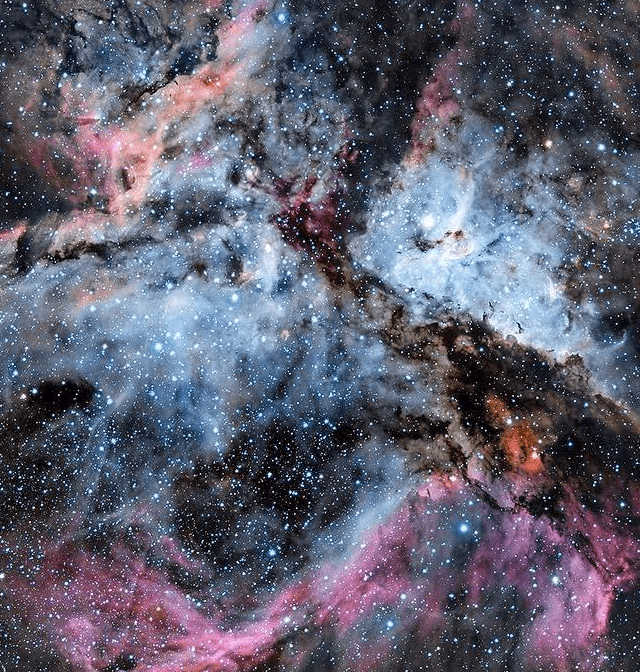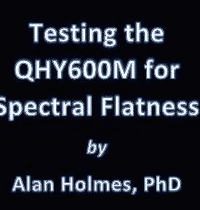By Luc Cathala
My name is Luc Cathala, I live in Mazan, a small village 30 km from Avignon, the city of the Popes in Vaucluse in France. I am 66 years old and have three children. Since I was a child, the night sky has always fascinated me. I bought astronomy magazines from time to time. In mid-December 2002 a friend lent me his Celestron 6. That night Saturn, Jupiter and the Moon were clearly visible, I was won over.
I bought a used C8 and modified a ToUcam Pro webcam to start taking photos.
In 2004 I acquired a second-hand 625 mm mirror. Being a technician, I manufactured the structure to support it in aluminum and steel. The production can be found in this post: https://www.webastro.net/forums/topic/10398-construction-t%C3%A9lescope-625-mm-%C3%A7a-continue/
In 2008, Jean-Marc Lecleire, one of the best French optical craftsmen, took over the mirror and increased its quality from lambda/2 to lambda/12. The secondary mirror with a small axis of 110 mm comes from Zen in Venice. Focal length 2730 mm.
I took the opportunity to build the equatorial platform which would allow me to access the photo. With a height of 95 mm, I have 1h20 of tracking before going back. It is powered by a “Picastro” developed by Arnaud Gérard, a brilliant electronics engineer who supplied kits.
I also made the shelter to put it in a fixed position allowing it to be operational in less than 5 minutes. The telescope can be put in a station wagon and reassembled in about twenty minutes. An airline pilot friend brought me a Point Gray Flea3 camera from Canada and I started taking lunar and planetary close-ups.
I live in the Rhône Valley in France, not far from Avignon, a place famous for its Mistral, a fairly violent wind circulating between the Massif Central and the Alps which limits the days of observations. My telescope, because of the focal length that I use up to 13650 mm, is very sensitive to high frequency turbulence caused by changes in the direction of air layers and mainly by the jet stream above 9000 m altitude. In addition to the planets, I photograph close-up lunar craters, in 2020 I was able to have those of Mars.
To combat turbulence I work a lot in infrared with the IR filters 610, 685, 742 and 807. Rarely in red and never in green. The days when conditions are extraordinary can be counted in the year on one hand.
In 2016 I bought a QHY5III178M. Its pixel count, sensitivity and USB3 were a clear improvement over the Flea3. In 2020 I bought a second-hand QHY5III178C which I use very little.
I was waiting for a more sensitive infrared camera and a colleague informed me of the release of the QHY5III678M V2. V1 required an external power supply which was unnecessary on V2.
I don’t know much about optics and sensors, so I’m just going to make a comparison in my area of use between the two cameras that are now at my disposal.
I use SharpCap 4.09562 software on an Asus GL703V 2.80 GHz laptop, 16 GB RAM, and 2 SSDs of 1 TB each. With this version of the software, the 678 is recognized immediately.
The camera arrives in a metal box, all the elements are blocked by quality foam. The accessories delivered allow you to be operational immediately.
A quick comparison shows that the 178 is a little longer, the other dimensions are identical. Tube diameter 31.60 mm radiator diameter 40 mm. With the 31.75mm filter holders, the 678 is much shorter. The filter supports have a protective glass. That of the 178 is larger than that of the 678 (IR cut). With the 678 comes an IR 850 filter.
At the back, the USB-B 3.0 port of the 178 is replaced by a USB-C 3.2 Gen 1 on the 678. The supplied USB-C cable is 1.8 meters long, of excellent quality, and is more than sufficient even for my telescope because I stand next to it. The 178’s 5-pin LEMO auto guiding port becomes a more common ST-4 port, allowing the cable to be replaced easily if necessary. The 678 has an LED that gives indications depending on the color in the event of a problem but is normally turned off. In the event of a breakdown, providing the color to QHY will allow for long-term diagnosis, the other dimensions are identical. Tube diameter 31.60 mm radiator diameter 40 mm. With the 31.75mm portafilters, the 678 is much shorter. On the sensor side, the photo shows the differences in sizes and formats.
The 178 M equipped with the Sony CMOS IMX178 STARVIS modified color sensor sometimes caused me to have a visible frame under heavy processing. With the Sony IMX 678 no problem. The QHY5III678M uses the entire usable surface area (3856X2180) unlike other manufacturers. The 178 captures the most light around 480nm while the 678 is between 650 and 715nm. The 678 in the area I use up to 807 nm only loses 14%.
If you have to work in the visible band you will need to keep the IR cut filter, even more so if you use the QHY5III678C.
Here are tests with the gain at 0 showing the differences between the two models under 65 lux lighting with a 200mm zoom open to 4.5.
The 678 allows you to gain acquisition speed or lower the gain compared to the 178.
It also offers greater magnification thanks to its smaller pixels, which can allow you to switch to the lower barlow and thus further gain in brightness. The higher we go into the infrared, the greater the difference. I tested in BIN1, BIN 2, the 678 also offers a BIN 4 mode.
All image dimensions are possible :
In terms of acquisition speeds with my computer, the promises are kept. Full resolution 8-bit 43 fps.
The precision of my equatorial platform only allows me exposures of 3 seconds at most. Not doing deep sky, I show you the speeds allowed by the two cameras with SharpCap. The 178 offers a much longer exposure time. Note that in this software we do not reach the planned 900 seconds, or 15 minutes with the 678.
At maximum resolution, no dropped images and no buffer up to at least 5000 images in SER on my computer with just SharpCap started.
The 512 MB DD3 buffer present in version 2 is certainly not unrelated to the transmission of this enormous data transmission.
For my use in planetary with a large diameter, this camera gives me more advantages compared to the 178 which are:
Easy installation with the software I use.
Absence of artifact because real monochrome sensor.
Larger sensors reduce the number of images in the case of mosaics.
Smaller pixels allow the use of less powerful blows.
Much better sensitivity in infrared to combat turbulence and allow either to reduce the exposure time or the gain.
The number of frames per second is barely lower than 178 despite the greater amount of information transferred to the computer.
Tests by other astronomers show excellent results thanks to the sensitivity in the infrared in solar imaging and we can have excellent results on planets such as Venus on its clouds and for the unilluminated zone in the infrared around 1000 nm and more allowing hot spots to be shown.
Although I haven’t yet had an exceptional night since I received the 678, I have already been able to take images at least equivalent to my best with the 178, which promises for the future.
French text translated into English by software.
Luc CATHALA Mazan 84380 in France. October 23, 2023.
Images shot with QHY5III678M:






















